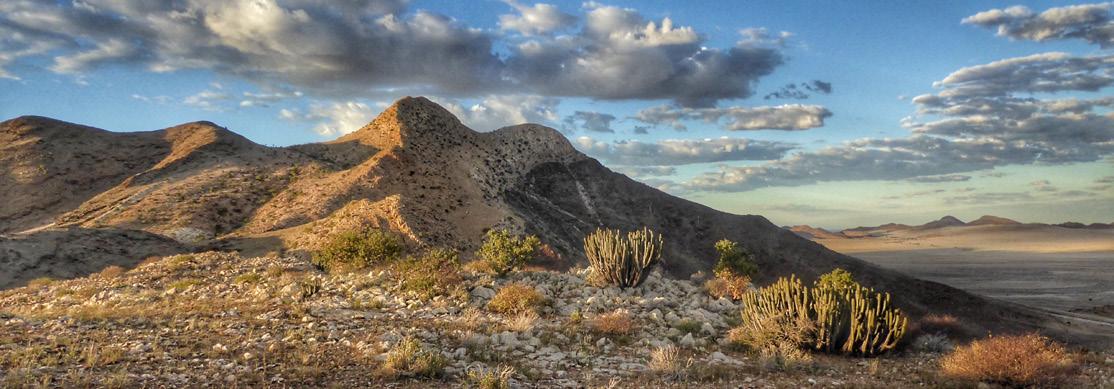
3 minute read
LOOKING GLOBAL
OCEANS OF LIFE IN DISTRESS
Oceans cover just over 70% of the earth, and the bounty of the sea has sustained humanity for thousands of years with an alternative source of protein, iodine, vitamins, minerals and omega-3 fatty acids. The oceans have also provided jobs to countless millions of people.
Vast as our oceans are, their resources are not inexhaustible. The insatiable hunger of the world’s booming population is one of the major causes of the over-exploitation of the oceans’ resources, while illegal fishing is another contributing factor.
The United Nations Food and Agriculture Organisation (FAO) has issued a sober warning, saying a third of the world’s assessed fisheries “… are currently pushed beyond their biological limit.” According to the FAO annual catches are in the order of about 80 million tonnes a year! This figure, however, could even be more than 30% higher because of illegal, under-reported and unregulated fishing, especially on the high seas where it is difficult to enforce regulations. The 23 most-caught species account for around 40% of global catches. Sadly about 10% of the total catch are by-catches and dumped overboard, while around 12% is processed into fishmeal and fish oil.
There are currently more than 4.6 million fishing vessels plying the oceans – with 75% of the global fleet being from Asia. Especially the high-value species which are popular in restaurants in the United States, Japan and the European Union are being targeted by illegal fishing vessels, while lower value species considered as affordable sources of protein are also under threat of over-exploitation.
About six million tonnes of tuna are caught every year. According to the FAO most tuna stocks are fully exploited and some are already over-exploited. Skipjack tuna, the most commonly caught species used for canning (it features prominently in sandwich fillings and salads), is not under threat. But catches of bluefin tuna, favoured in sushi in upmarket restaurants in the east, began plunging already from the 1950s to the point where it is now classified as critically endangered.
About 100 million sharks are caught each year for their dorsal fins which are used in shark fin soup, a delicacy in China. The sharks are simply dumped (often while they are still alive) once the fin has been removed. Sharks are apex predators and a decrease in the shark population will have a profound effect on the entire marine ecosystem.
But not only commercial species are under threat. Hundreds of thousands of sea turtles and seabirds, as well as marine mammals are inadvertently caught in nets and longlines. The birds and turtles are attracted to these lines with baited hooks.
Namibia knows the consequences of the over-exploitation of its fishing resources all too well. Prior to independence, the country’s rich fishing waters were heavily exploited by South African and foreignfishing fleets operating outside of the 22 km territorial waters over which the country’s administration had jurisdiction. Catches of pilchards, the “silver harvest of the sea,” peaked in 1968 when 1.4 million tonnes were processed onshore and on board two factory ships which operated off the Namibian waters and produced fishmeal. Predictably, the industry crashed spectacularly.
Following independence, Namibia declared a 200 nautical mile exclusive economic zone and implemented policies that were aimed at rebuilding the depleted marine resources.
But the industry has had mixed fortunes. While climatic factors such as El Niño and changes in the marine environment could be responsible for the migration of fish and reduced catches along our coast, the overexploitation of pilchards in particular is the most likely cause of the decline in catches. The total allowable catch (TAC) for pilchard increased from 40,000 tonnes in 1990 to 125,000 tonnes three years later. The quota was drastically reduced in 1994, and in 2002 there was a zero TAC. By 2014, the TAC was up to 30,000 tonnes, but then disaster struck when only 3,400 tonnes were landed in 2016, resulting in a three-year moratorium onpilchard fishing from 2018 to 2020. There has also been a substantial decrease in the TAC for horse mackerel, also known as maasbanker, which has been reduced from 500,000 tonnes in 1994 to 330,000 tonnes at present.
In addition to disturbing the marine ecology, over-exploitation of the oceans’ fish resources will ultimately also lead to food insecurity and massive job losses. And while you are unlikely to lose your appetite for fish (if you do happen to enjoy fish) after reading this article, spare a thought for the Living Ocean which is in distress. Her resources are not inexhaustible.
Namibian freelance journalist and travel writer: Willie Olivier










